+Search query
-Structure paper
| Title | Shigella effector IpaH1.4 subverts host E3 ligase RNF213 to evade antibacterial immunity. |
|---|---|
| Journal, issue, pages | Nat Commun, Vol. 16, Issue 1, Page 3099, Year 2025 |
| Publish date | Apr 1, 2025 |
 Authors Authors | Xindi Zhou / Huijing Zhang / Yaru Wang / Danni Wang / Zhiqiao Lin / Yuchao Zhang / Yubin Tang / Jianping Liu / Yu-Feng Yao / Yixiao Zhang / Lifeng Pan /  |
| PubMed Abstract | Ubiquitination plays vital roles in modulating pathogen-host cell interactions. RNF213, a E3 ligase, can catalyze the ubiquitination of lipopolysaccharide (LPS) and is crucial for antibacterial ...Ubiquitination plays vital roles in modulating pathogen-host cell interactions. RNF213, a E3 ligase, can catalyze the ubiquitination of lipopolysaccharide (LPS) and is crucial for antibacterial immunity in mammals. Shigella flexneri, an LPS-containing pathogenic bacterium, has developed mechanisms to evade host antibacterial defenses during infection. However, the precise strategies by which S. flexneri circumvents RNF213-mediated antibacterial immunity remain poorly understood. Here, through comprehensive biochemical, structural and cellular analyses, we reveal that the E3 effector IpaH1.4 of S. flexneri can directly target human RNF213 via a specific interaction between the IpaH1.4 LRR domain and the RING domain of RNF213, and mediate the ubiquitination and proteasomal degradation of RNF213 in cells. Furthermore, we determine the cryo-EM structure of human RNF213 and the crystal structure of the IpaH1.4 LRR/RNF213 RING complex, elucidating the molecular mechanism underlying the specific recognition of RNF213 by IpaH1.4. Finally, our cell based functional assays demonstrate that the targeting of host RNF213 by IpaH1.4 promotes S. flexneri proliferation within infected cells. In summary, our work uncovers an unprecedented strategy employed by S. flexneri to subvert the key host immune factor RNF213, thereby facilitating bacterial proliferation during invasion. |
 External links External links |  Nat Commun / Nat Commun /  PubMed:40164614 / PubMed:40164614 /  PubMed Central PubMed Central |
| Methods | EM (single particle) / X-ray diffraction |
| Resolution | 1.7 - 3.47 Å |
| Structure data | EMDB-61848, PDB-9jw1: EMDB-61852, PDB-9jwg:  PDB-9jta: |
| Chemicals |  ChemComp-ZN: 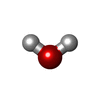 ChemComp-HOH: 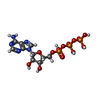 ChemComp-ATP:  ChemComp-MG: |
| Source |
|
 Keywords Keywords | CYTOSOLIC PROTEIN / RNF213 / IpaH1.4 |
 Movie
Movie Controller
Controller Structure viewers
Structure viewers About Yorodumi Papers
About Yorodumi Papers



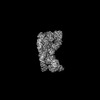

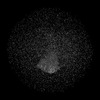
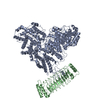
 homo sapiens (human)
homo sapiens (human) shigella flexneri (bacteria)
shigella flexneri (bacteria)